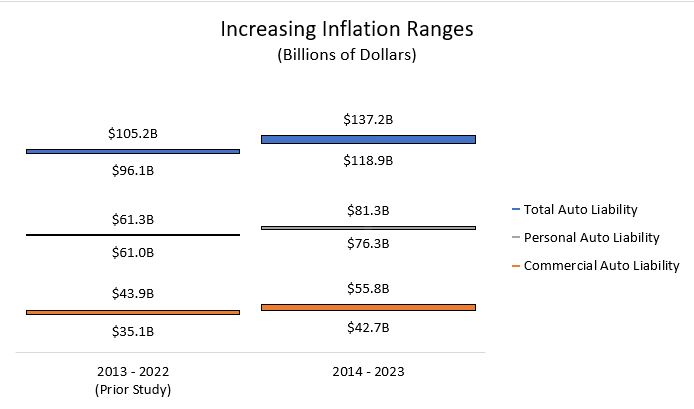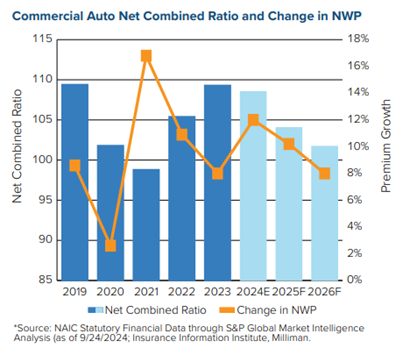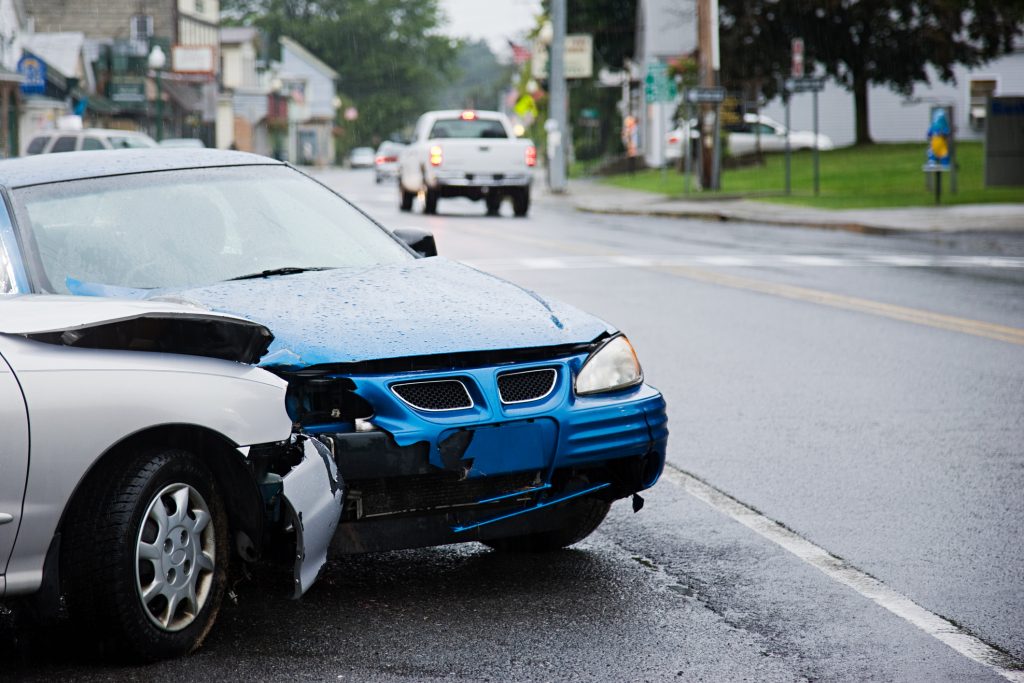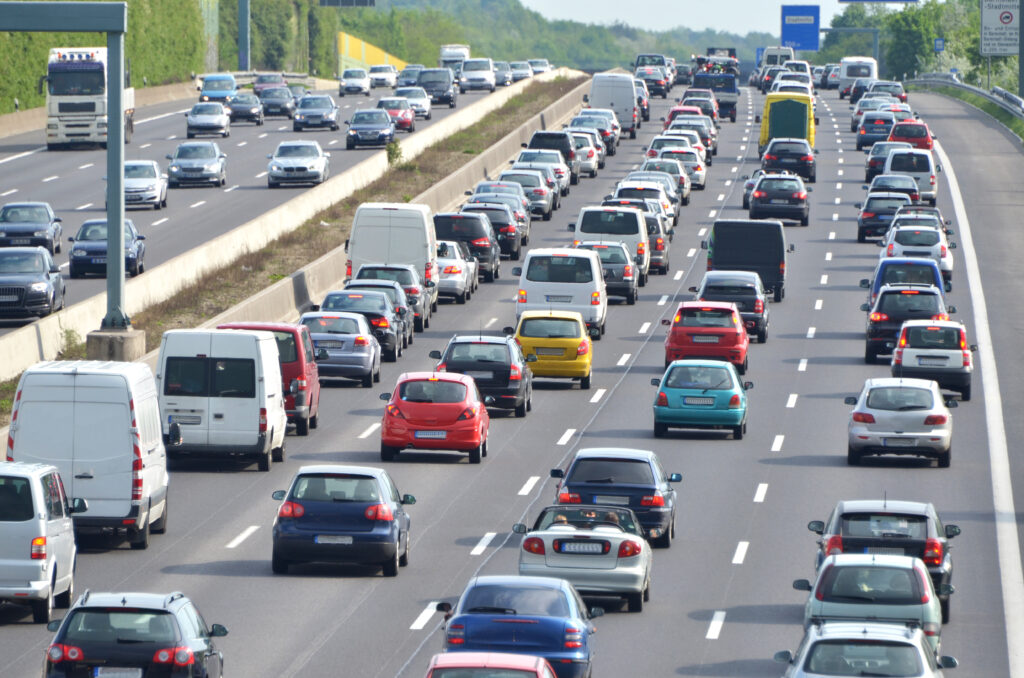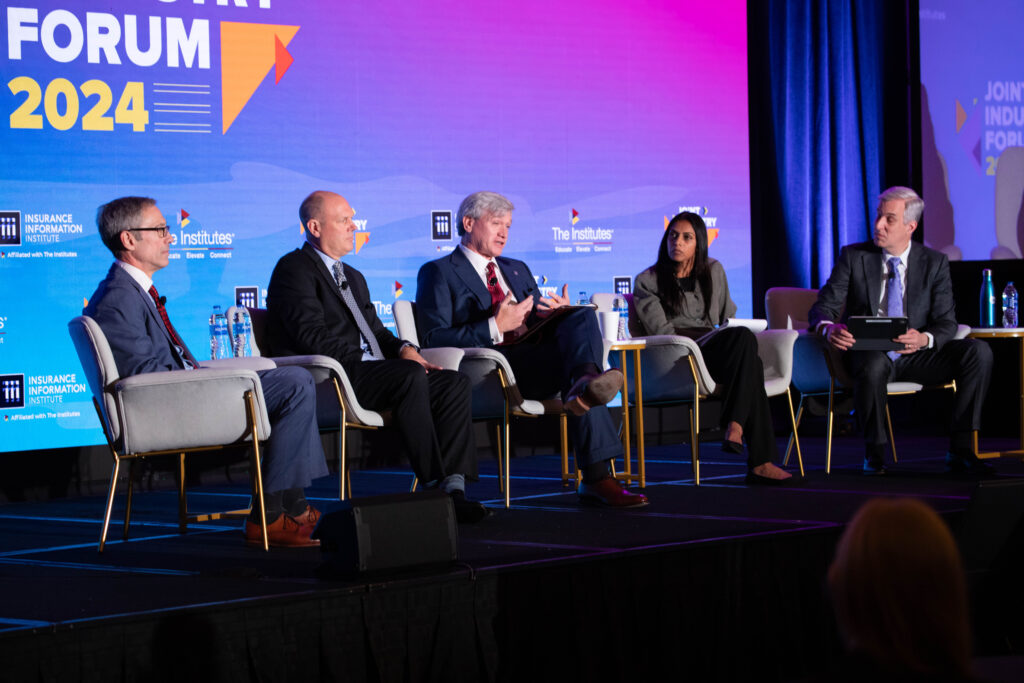
By Lewis Nibbelin, Contributing Writer, Triple-I
From “social inflation” to “tort reform” to, simply, “fraud,” settling upon uniform terminology to describe litigation trends that drive up costs – including insurance premiums – for all Americans is a primary challenge to addressing them, according to participants at Triple-I’s 2024 Joint Industry Forum.
“As we’re trying to raise awareness of this problem with consumers, ‘social inflation’ doesn’t work,” said discussion moderator and Triple-I’s Chief Insurance Officer Dale Porfilio. Though Triple-I previously favored “social inflation,” consumer testing was done that suggested a better name was needed. “That’s when we landed on ‘legal system abuse.’”
“The name absolutely matters,” said Viji Rangaswami, senior vice president and chief public affairs officer for Liberty Mutual. “When you talk to a legislator, whether that’s in Kansas or in Washington, D.C., and you say the words, ‘social inflation,’ they don’t know what you’re talking about. But when you say the words ‘legal system abuse,’ you see the lightbulb go off.”
Louisiana Insurance Commissioner Tim Temple – a self-described “unicorn” among insurance regulators, given his decades-long background in the industry as an agent, broker, and company president – even renamed programs to address “legal system abuse” when he assumed office in January. This shift exemplifies Temple’s commitment to using his experience to shape a regulatory and statutory environment that enhances the attractiveness of Louisiana’s insurance market.
“We’re getting more buy-in now, people understand it,” Temple said. “That’s part of transparency – talking about what it truly is.”
Clear communication is key
Opaque, ill-defined language empowers predatory “billboard attorneys” to define these terms themselves, contributing to pervasive policyholder distrust, said Jeff Sauls, Farmers Insurance head of legislative affairs.
“There’s this perception of the insurance industry amongst the public – and plaintiffs’ attorneys help portray this – as a high-margin business,” he said, when, in reality, “we compete with grocery stores for who can make less money in an average year.”
Attorney advertising – estimated to total over $2.4 billion across the U.S. last year – has commandeered the messaging once associated with insurers, noted Temple, who encouraged the industry to “take back that high ground” of providing “dependability and stability during the worst days of people’s lives” without overuse of brand mascots or jingles.
“We have to remind the public why we exist,” Rangaswami added. “We want to pay claims as expeditiously as possible…. We’re on the side of the consumer, whereas the plaintiffs’ attorney is often on their own side or the investor’s side.”
Third-party litigation funding
With her reference to “investors,” Rangaswami took aim at a little-known, rapidly growing practice called third-party litigation funding (TPLF), in which investors with no stake beyond potential profit step in to fund lawsuits against corporate entities perceived as having deep pockets. As of last year, such investors retained an estimated $15.2 billion in assets for U.S. litigation alone.
Only a handful of states require mandatory disclosure of TPLF, which enables hedge funds and other foreign funders to compound and profit from protracted and even fraudulent U.S. court cases. Secrecy surrounding TPLF prevents insurers and regulators from identifying, let alone mitigating, the risks of increased costs and time to resolve claims disputes.
Preventing adversaries to the U.S. from exploiting TPLF to influence settlement outcomes and access sensitive defense information is another concern.
“We’re looking at TPLF as potentially exacerbating national security risk,” said Jerry Theodorou, policy director for finance, insurance, and trade at the R Street Institute. “Most people don’t know what TPLF is and the way it can insidiously impact the economy, our businesses, our jobs.”
Everyone is affected
Legal system abuse costs the highly litigious states Louisiana and Georgia over 175,000 jobs combined and thousand-dollar “tort taxes” for each resident per year, earning both states recurring spots on the American Tort Reform Foundation’s list of “Judicial Hellholes.” They also rank among the least affordable places for auto and homeowners’ insurance by the Insurance Research Council – an affiliate of The Institutes, like Triple-I.
Louisiana recently enacted a law enforcing some oversight over TPLF, Temple noted, as well as repealed a unique “three-year rule” that impeded actuarially-sound underwriting. But as the state’s bodily injury claims climb well over the national average, more reform is needed to return insurance profitability to the state.
“One thing I would look to is importing some of the good things Florida has done,” Theodorou suggested, explaining that reform curtailing contingency and one-way attorneys’ fees “have brought down the number of lawsuits against insurance companies by 24 percent” for the second consecutive three-quarter period. “Notice of intention to sue is also down by double digits. It’s working, so let’s learn from that.”
Considering the fact that the former “poster child” for legal system abuse generated over 70 percent of all homeowners insurance litigation nationally in 2022 – despite accounting for only about 15 percent of total homeowners claims – Florida’s reduced premium growth and nine new property insurers this year reveal the likely efficacy of such reforms in other states.
Education and coalition building
But such reform requires advocacy, which requires consumer education and coalition building across diverse stakeholder groups, Rangaswami pointed out.
Fixing “an economy-wide problem,” she explained, requires an “economy-wide coalition.”
The end goal is not a “tilted playing field,” Sauls emphasized. “We’re trying to get to a place where we are all on level footing, without being exploited by plaintiffs’ attorneys.”
Legal system abuse “is going to be a pressure point for the industry moving forward,” stressed Fred Karlinsky, shareholder and global chair of Greenberg Traurig, LLP. “No state is immune from what we’ve seen in Florida.”
Karlinsky emphasized that spreading normalization of “nuclear” (over $10 million) and an emergent class of “thermonuclear” (over $100 million) verdicts will stall reform in newly targeted states.
Rangaswami pointed out that not all the news has been bad.
“We had some great wins in 2024,” she said, citing Florida’s improved insurance market and legislation introduced at both the federal and state levels as movement in a promising direction. “But we have to keep this momentum up.”
Learn More:
Triple-I Issues Brief: Legal System Abuse
Agents Play Critical Role in Navigating Impacts of Legal System Abuse on Customers
Legal System Abuse/Social Inflation Adds Costs and Challenges for US Casualty Insurance: AM Best
Who’s Financing Legal System Abuse? Louisianans Need to Know
Legal Reforms Boost Florida Insurance Market; Premium Relief Will Require More Time
How Georgia Might Learn From Florida Reforms
Inflation Continues to Drive Up Consumers’ Insurance CostsTriple-I Launches Campaign to Highlight Challenges to Insurance Affordability in Georgia



